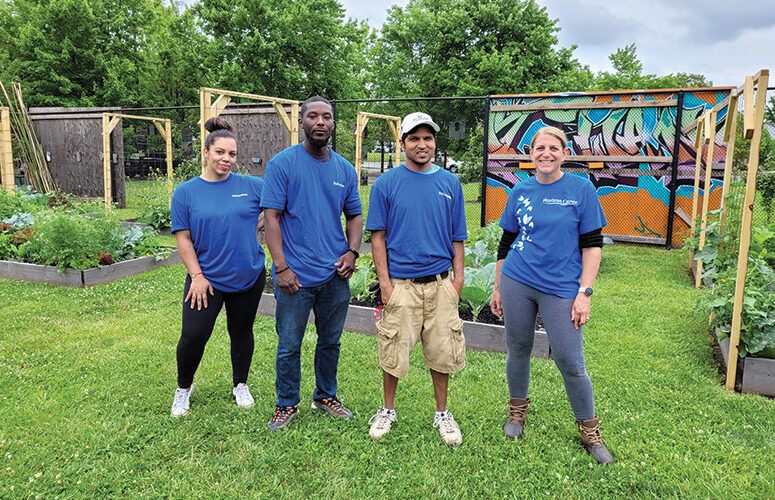
The Heroics and Hurdles of Non-Profits
New Jersey’s charitable organizations and the people they serve are at times strained in a post-pandemic environment.
By George N. Saliba, Contributing Writer On Mar 17, 2023From nonprofits focused on the arts, food insecurity and/or healthcare – to everything in between – New Jersey’s more than 40,000 501(c)(3) organizations annually expended more than $50 billion in a pre-COVID world, according to the New Jersey Center for Nonprofits. However, the coronavirus pandemic’s peak and its aftermath have left some nonprofits here facing financial uncertainties as the need for their services is increasing.
Although The Food Bank of South Jersey appears to be in a strong position to continue delivering its services, its president and CEO, Fred Wasiak, is deeply familiar with a growing people-in-need scenario: His organization fed 47,000 people before the pandemic, 95,000 people at the pandemic’s height, and is now feeding 130,000 individuals – a nearly three-fold increase in meals served.
Wasiak repeatedly encounters individuals who assume his food bank must be “back to normal” following the pandemic’s peak, and he disabuses them of that notion: “I say [to them]: ‘Are you paying the same [prices] for gas and groceries as everyone else? For people who are at the [financial] threshold, [inflation is] really putting the pressure on them.’”
There are other strains on vulnerable populations served by some New Jersey nonprofits: The state’s pandemic rent/utility moratoriums did not absolve residents of those payments, but rather deferred them into the future – now – a time when government stimulus checks and related programs are in the rearview mirror.
Nonprofits Challenges
Nonprofits, again, are sometimes struggling, too: The New Jersey Center for Nonprofits’ “New Jersey Nonprofits: Trends and Outlook 2022” report showcased that 81% of Garden State nonprofits expected demand for their services to increase in 2022 (latest data available, collected between February and March 2022), with 79% of them also anticipating increased expenses. Just 55% of these nonprofits expected their funding to increase. Labor shortages have also beleaguered nonprofits, as has been the case for millions of businesses nationwide.
Nonprofit funding originates from a variety of sources, including, but not limited to, private foundations; corporate and individual donations; and federal, state, county and local governments. Nonprofits’ endowments and investment income also play roles in their operations. And the importance of giving to nonprofits cannot be understated: donations from individuals, corporations and foundations – in that order – comprised the three largest sources of increasing revenue for New Jersey nonprofits in 2021.
A broader case in study: The Food Bank of South Jersey has a strong development department that is working hard to keep community relations strong and to continue food drives as it also builds a strong network with other South Jersey food banks. Its development team is additionally soliciting donations, collaborating with companies throughout New Jersey and is engaging with the State of New Jersey.
Foundations
On the foundation front, even a relatively well-known foundation such as The Horizon Foundation for New Jersey – where the sole originating funding source is monies from its parent company Horizon Blue Cross Blue Shield of New Jersey – has not been immune from various changes in circumstances.
Jonathan Pearson is director of corporate social responsibility for Horizon Blue Cross Blue Shield of New Jersey and executive director of The Horizon Foundation for New Jersey. He says of the foundation: “We have an investment strategy for our corpus – our endowment – and over the last year (2022), it’s been challenging because the invested dollars are not [generating] expected returns.”
The hurdles for some nonprofits/foundations and those they serve are, again, not just financial. Health-centric organizations such as Horizon and its foundation are witnessing an increasingly unhealthy New Jersey population, for which the Centers for Disease Control reports that 28.6% of residents here are obese, part of a broader national problem.
And where there is obesity there is often diabetes: Of the approximate 9 million people who call New Jersey home, the American Diabetes Association reported in 2021 that nearly one million residents had the condition, and another 2.4 million people here are pre-diabetic. Mental health is another front-and-center concern, with 24.9% of New Jersey’s population suffering from anxiety and/or a depressive disorder in 2023, according to the U.S. Census Bureau. Pearson explains that Horizon examines New Jersey Department of Health (NJDOH) data “to make sure we’re funding … where we‘re seeing significant need.”
The Foundation- Nonprofit Connection
How do foundations address these and other needs? The Horizon Foundation for New Jersey, for example, provides grants to nonprofits that are focused on obesity, opioid misuse, and mental health. The foundation also has a separate pillar centered on reducing barriers to better health (such as transportation issues surrounding traveling to doctors’ appointments), as well as reducing racial barriers and other health disparities. Nonprofits focused on arts and culture are additionally supported under a third Horizon foundation pillar.
In these and other ways, The Horizon Foundation for New Jersey has granted $71 million since its 2004 inception. Flash forward to today: Horizon’s Pearson expects the struggles and needs of New Jersey’s population to increase in 2023. He not only echoes others’ sentiments regarding the economic challenges facing individuals and families, but he adds another specter: “I think we’re now hearing more about stagflation for 2023, what that really means, and how that impacts people’s day-to-day lives.”
Thinking Globally
Some foundations have a global mission. While pharmaceutical giant Sanofi has North American headquarters in Bridgewater and is positively impacting people’s lives via Sanofi Cares North America Foundation’s Patient Assistance Programs and additional philanthropy, the French company started a new, Paris-based foundation in May 2022: Foundation S–The Sanofi Collective. The “think” and “do” foundation – to use Sanofi’s words to describe both expert insight and plan execution – is primarily focused on increasing the health of climate-vulnerable populations, combatting childhood cancer and, of course, humanitarian aid.
It’s already providing 45 million daily treatments in locales such as Ukraine, Pakistan, Lebanon and Sri Lanka, to name a few. Via a conference call from France, Vanina Lauren-Ledru, director general, Foundation S–The Sanofi Collective, tells New Jersey Business Magazine that “100% [of the foundation’s funding is] coming from Sanofi, and that Sanofi has allocated a budget to Foundation S. However, probably unlike other foundations, we also receive monies from Sanofi for all our medicine donations.”
Junior Achievement of New Jersey
Assistance comes in all forms. Billed as the United States’ “largest organization dedicated to giving young people the knowledge and skills they need to own their economic success, plan for their futures, and make smart academic and economic choices,” the nonprofit Junior Achievement – along with its local Junior Achievement of New Jersey (JANJ) organization – appears to be faring well.
With 90% of its fundraising originating from corporate partners, James W. Horne, Jr., president and CEO of JANJ, sees opportunity against the backdrop of the labor market: “The fact that we provide career readiness and career exploration is very timely as we think about what’s happened with the Great Retirement” (it created job vacancies). Horne says JANJ has strategies for identifying new partners as the landscape of New Jersey businesses evolves, and that there are also public-sector funding opportunities associated with career readiness.
Conclusion
As nonprofits vary in their size, scope, funding and missions, they unite under the umbrella of bettering society and/or its inhabitants. With a recession predicted for 2023, the extent to which nonprofits and foundations can both survive and continue to provide robust services is not entirely clear. If corporations and US residents alike are financially battered, so too may nonprofits and the foundations fueled by them.
To access more business news, visit NJB News Now.






